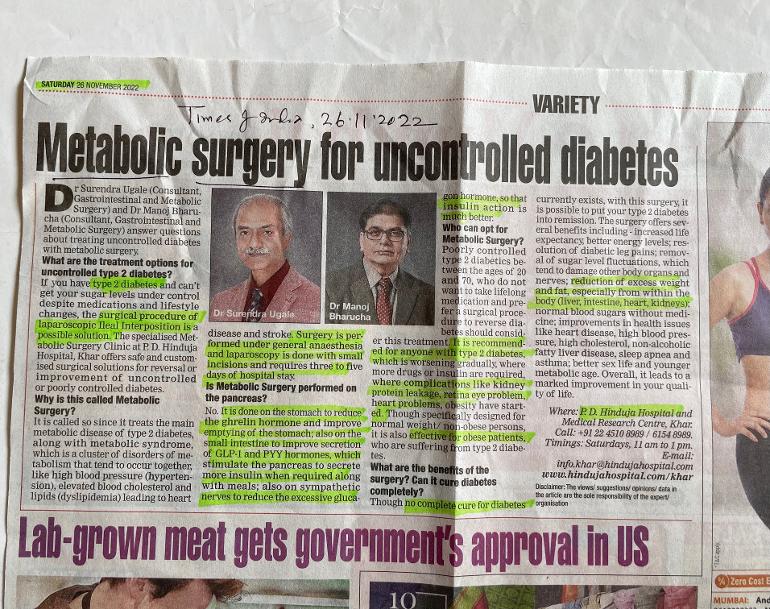I saw an article in Times of india, Mumbai edition dated 26.11.2022..
( see below)..
More information from internet-
The term ileal interposition is the process of replacing the last part of the small intestine and the initial part with the most brief expression. This surgery functions on the principle of disabling the hormones that cause insulin resistance and increasing hormone levels that increase insulin sensitivity.
drcelikinternational.com/me... Interposition
The term ileal interposition is the process of replacing the last part of the small intestine and the initial part with the most brief expression. This surgery functions on the principle of disabling the hormones that cause insulin resistance and increasing hormone levels that increase insulin sensitivity.From the beginning Ileal Interposition operation is a surgical treatment method developed for the treatment of Type 2 Diabetes. The definition of metabolic syndrome includes Type 2 Diabetes, hypertension, hyperlipidemias (high cholesterol and triglyceride) and excess weight. It is possible to treat all the components of Metabolic Syndrome with Ileal Interposition surgery.Ileal Interposition surgery is not an obesity surgery as a starting point. It is an operation aimed at treating all of the health problems within the scope of Metabolic Syndrome, especially Type 2 Diabetes.Ileal Interposition surgery does not make absorption restrictions or absorption disorders. Patients with ileal interposition surgery switch to liquid food from the 3rd day after surgery. They can continue their lives in six months to 1 year with a completely free diet without taking vitamin or mineral supplements.Patients who are eligible for surgery usually leave all diabetes, blood pressure and cholesterol medications they use after Ileal Interposition surgery. After the operation, they are observed in terms of the course of these diseases in the hospitalization process. The vast majority of patients are discharged without using any of these medication.In some, it functions on the principle of increasing the levels of hormones that increase the sensitivity of the medications in gradually decreasing doses, ranging from a few weeks to a few months, until the metabolic effect is expected to settle. All of these medications are discontinued when measurements are normalized.There are two different versions of Ileal Interposition surgery. These are: diverted ileal interposition and non diverted ileal interposition.
